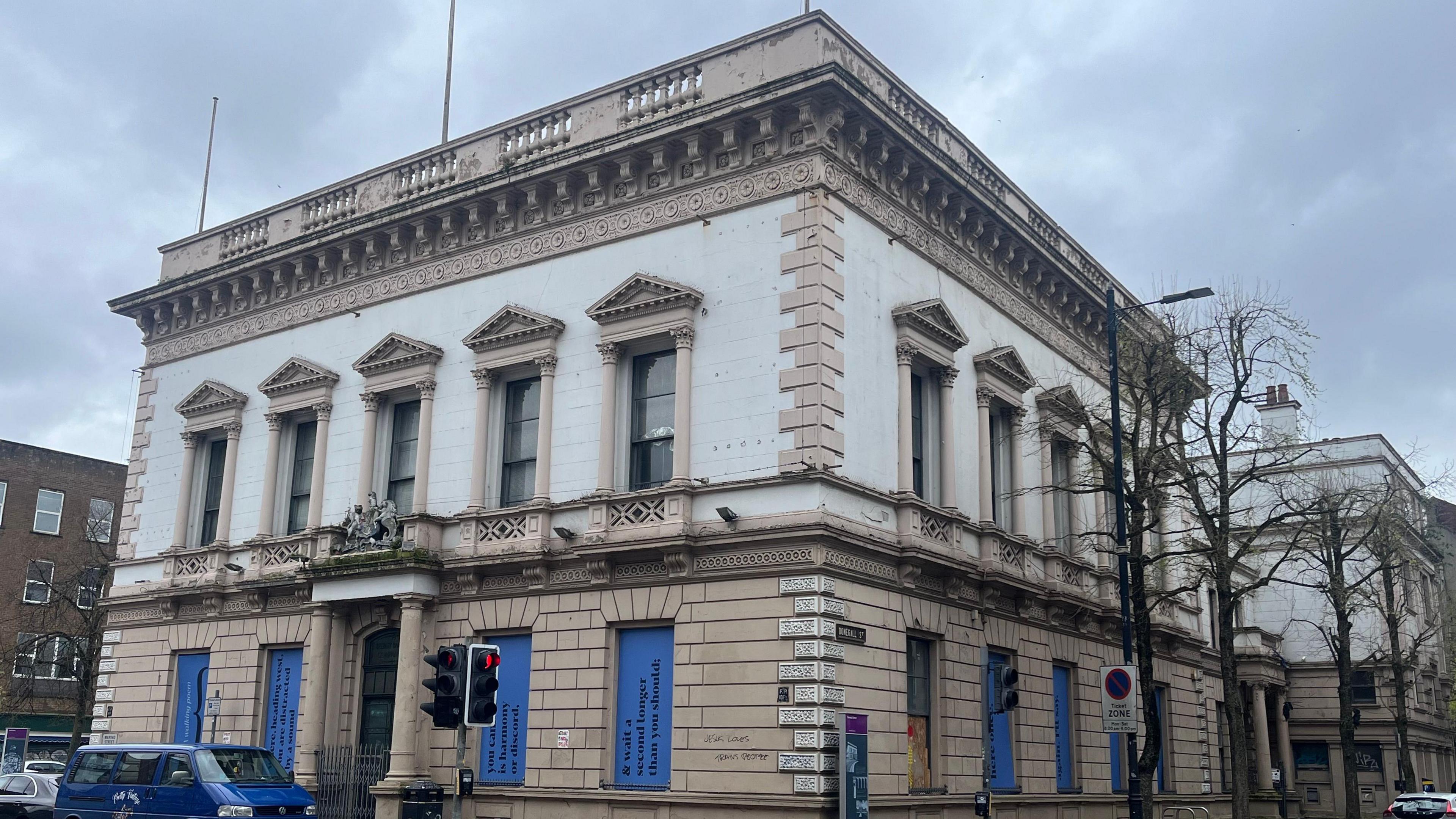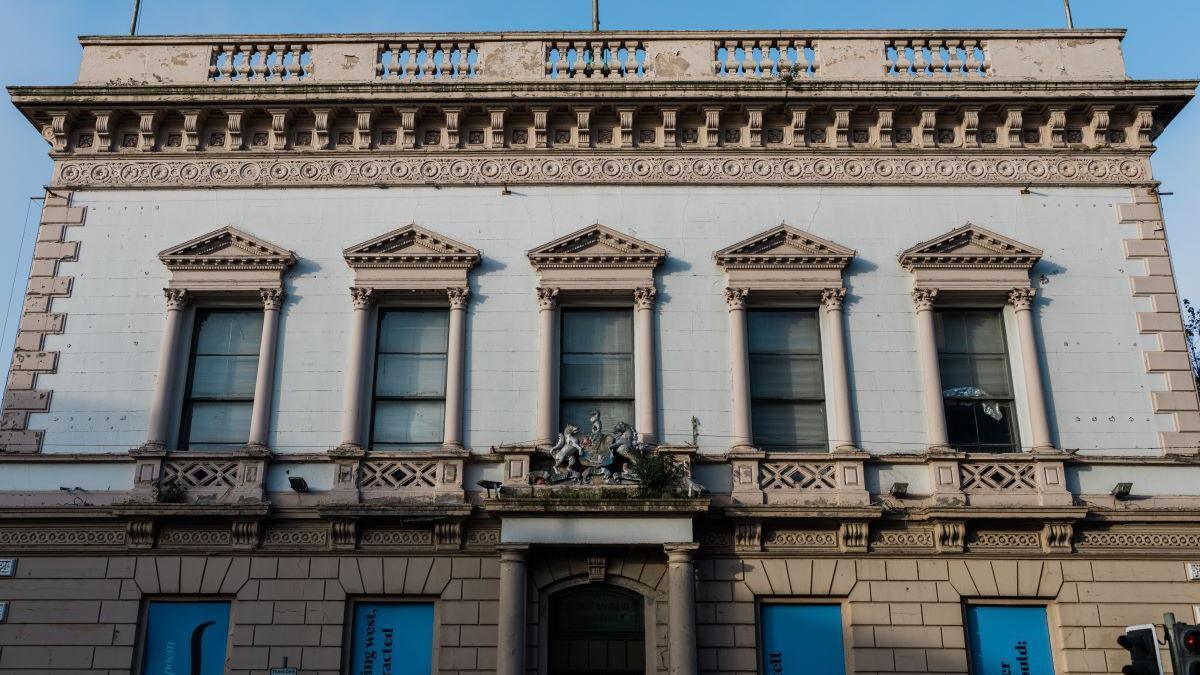Historic Assembly Rooms bought by Belfast City Council

Built in 1769, the Assembly Rooms building is located at the corner of North Street and Waring Street in Belfast
- Published
Belfast City Council has completed its purchase of the historic Assembly Rooms building and adjacent properties in the Cathedral Quarter.
Vacant since 2000, Assembly Rooms is a grade B1 listed heritage building that dates to 1769.
The council has not confirmed the cost, but it was thought the bid in September was in the region of £2.7m.
The council said it was an opportunity to "breathe new life and vibrancy" into the city centre.
Councillor Natasha Brennan, chair of Belfast City Council's Strategic Policy and Resources Committee, said the Assembly Rooms is one of Belfast's most historic assets.
"So this is both a significant and a symbolic purchase," she said.
"Belfast's success depends on a successful city core – that's why we're focusing a range of initiatives to make our city centre the best it can be."
The Assembly Rooms was the site of the famous Belfast Harp Festival in 1792, which led to the preservation of the ancient tradition of Irish harping.
It was also where plans to establish a slave trading company were rejected in 1786 and where Henry Joy McCracken was sentenced to death in 1798.
In spite of the building's historical and cultural significance, it had fallen out of use in the past two decades and placed on a list of global 'at risk' heritage sites earlier this year by the World Monuments Fund.
Potential future uses for the building are currently being explored.
The council has also agreed a plan to improve the Cathedral and northeast quarter of the city.
It focuses on protecting the area's history while adding new homes and businesses around a creative hub.
A public consultation is to be held this autumn.
- Published1 September

- Published15 January
